School History
The following history of Belle View Elementary School was written in 2002 by Don McIlwain in celebration of our school’s 50th anniversary.
Belle View 1952
Much has changed since the opening of Belle View Elementary School on November 19, 1952, including even the street address of the school. In 1952, the address was 620 Ft. Hunt Road, New Alexandria. There was no zip code. The telephone number, South 5‐5133, while it looks different, only has recently changed. At that time, the first part of the telephone number referred to the exchange location. When the telephone company converted letters into numbers, SO became 76.
The area and entire country were experiencing great change following World War II. In 1952, the national scene featured a growing Cold War between the United States and Soviet Union, as well as a grinding "hot war" in Korea. The year also saw a tough presidential campaign between Adlai Stevenson and General Dwight D. Eisenhower. The Civil Rights movement was just beginning, but would soon profoundly change the structure of schools in Fairfax County and across the nation.
In the region, major department stores, such as Hechts and Woodies, were opening their first suburban branches and there was great debate over a proposed bridge over the Potomac, located at Jones Point. Fairfax County was beginning to change from a rural to a suburban county. Neighborhoods, such as Bucknell, served as beacons for young families. A new home, financed by the Veteran's Administration, could be had for $9,500.
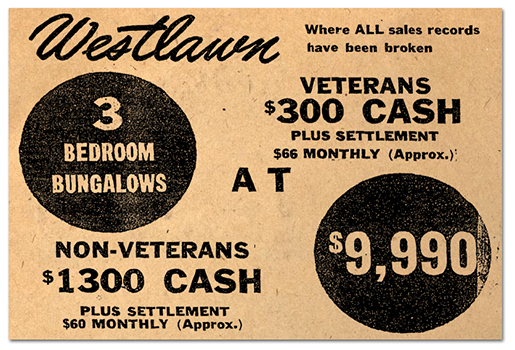
The Baby Boom
By the early 1950's, children born as a result of the beginning of the baby boom were ready for school. There was one major problem: there were not enough schools to meet the demand. As a result of this enormous growth (a 10% increase in the number of students from 1951 to 1952) Belle View and twenty other elementary schools would be built between 1951 and 1957. Because of overcrowding, about one‐third of county students (or about 7,000) were being taught in temporary facilities such as churches, fire departments, apartment buildings, and Quonset huts. In May 1950, the voters of the county approved a $10 million bond issue. This led to the construction and opening of Belle View, Westlawn, Bailey's, Woodley Hills, and Drew‐Smith schools for the 1952‐52 school year. In addition, six more schools would be opened by the start of the following year.
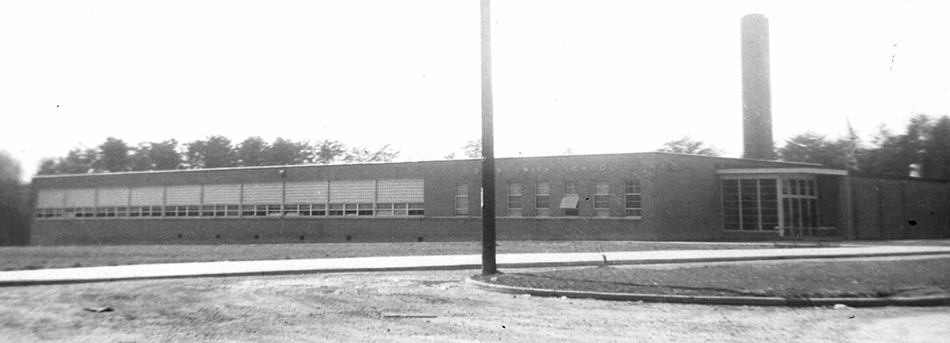
Design & Construction
Belle View Elementary School, as designed by architect Robert Willgoos, was to have 20 classrooms on two floors and an auditorium. A shortage of funds and rising construction costs caused the auditorium not to be built. A kitchen and cafeteria were added in early 1953. Because of construction delays, Belle View did not open its doors until almost Thanksgiving. Classes were held in some of the Belle View apartments until the school was ready. This resulted in half‐day sessions for first and second graders. Finally, on November 19, 1952, Principal Harry Burks, 16 teachers, and 618 students moved into the new school.
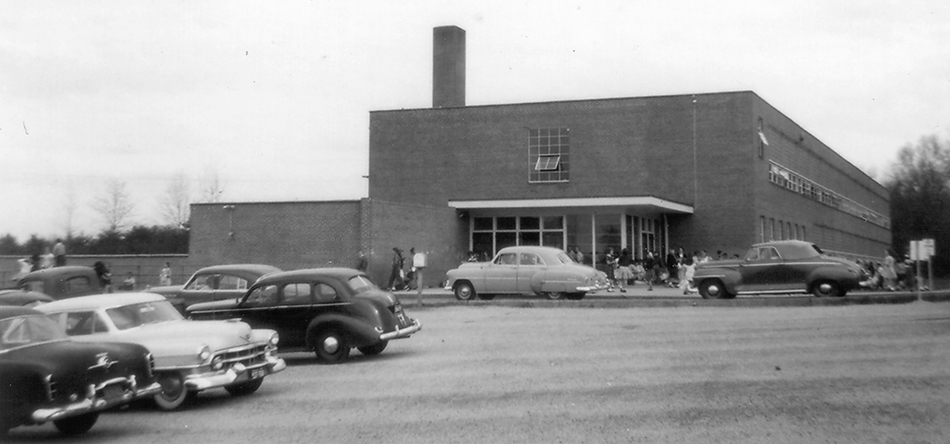
The 1950s and 1960s
Fairfax Country and Belle View Elementary School underwent great changes in the fifteen or so years between the arrival of Elvis Presley and the break‐up of the Beatles. These changes, which mirrored changes in American society, were fueled in part by the incredible growth in the county. Post‐war suburbia and the impact of a larger federal government led to Fairfax County being dubbed "The Fastest Growing County in the East" in 1959. Three school bond issues in the 1950s and a major construction program were not enough to meet the demand for new classrooms. One solution was to reorganize the school system. Belle View (and most county elementary schools) housed students in grades 1‐7. High school was for students in grades 8‐12. Beginning in 1960, nine new intermediate schools were opened for 7th and 8th grades, including Bryant (now West Potomac High School) in 1961. This provided some relief; however, by the mid‐1960s overcrowding led to the construction of Quander Road School. For the next twelve years, students living between Swan Terrace and Quander Road would not call Belle View home. Interestingly, at the same time, students from Hunting Towers Apartments in Alexandria were in the attendance area for Belle View.

Integration
Other changes would work to make Belle View a more diverse school by the end of the 1960s. All racially segregated schools in Fairfax County were closed at the end of the 1965-66 school year, including Drew-Smith Elementary School. African-American students would now be able to attend their neighborhood schools. Fairfax County would be among the first group of schools in the country to receive certification from the U.S. Commissioner of Education indicating compliance with the Civil Rights Act of 1964. Use of technology and a broadening of the basic curriculum were also evident during the 1960s. One innovation was the use of educational television to provide foreign language instruction to elementary students. The "Space Race" and America’s growing involvement in Southeast Asia led to an increased emphasis on learning about the cultures of people whose ideologies are different from ours, but with whom we must learn to communicate and live.
HeadStart & Kindergarten
Another area of growing emphasis was school readiness and early childhood education. Beginning with federally‐sponsored "Project HeadStart", children younger than six could participate in public schools. This success would lead to the implementation of Kindergarten at Belle View and throughout the county in 1968. The space used by seventh graders who were sent to intermediate school in 1961, would be used by five‐year‐olds in 1968. Changes could also be seen in acceptable standards of dress. The 1957 administrative handbook includes a section that defines appropriate attire for students. This included collared shirts that were to be buttoned and tucked‐in for boys and girls. In addition, girls were not allowed to wear tight fitting' clothing or hair curlers to school. While these rules may not have been changed by the school board, by the late 1960's they were no longer being enforced. By the end of the 1960s, Belle View had seen its share of change. Integration, educational television, and Kindergarten were some of the major changes that took place. But, Belle View was beginning to show its age. Renovation was coming.
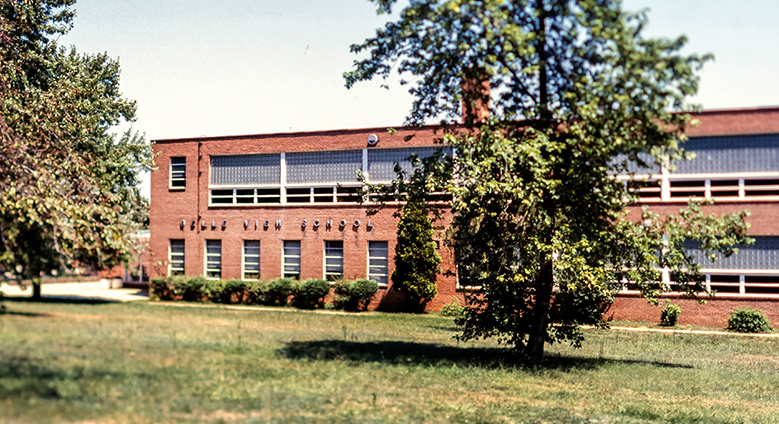
The 1970s and 1980s
Reviewing the class photographs from Belle View Elementary during the 1970's and 1980's provides a mirror to the past. Clothing reflected the trend away from formality. By the late 1970s, boys who would have been in ties and blazers during the 1950s were sporting shoulder length hair and leisure suits. Girls' fashion had changed too, and you can almost guess the year of the picture by the number of "Dorothy Hamill" or "Farrah Fawcett" hairstyles in each class. Blue jeans, the outlawed dungarees of the 1950s, became unofficial uniforms. Among the staff, fashion had changed, but the teacher composition remained primarily female. Many parents of today's Belle View population were in elementary school during this time. They may remember what it was like to attend school during an era that included the end of the war in Vietnam, the Energy Crisis, the American Bicentennial, disco and punk rock, Iran Contra, and the fall of the Berlin Wall in 1989.
By the beginning of 1970, Belle View was beginning to show its age. The result was a renovation which included additional classrooms in 1971. This renovation added space and improved infrastructure. However, while Fairfax County continued to grow, the area around Belle View had reached a plateau. Many of the families that had moved in during the 1950s and 1960s no longer had school‐aged children, and the size of the schools were of all things, getting smaller. At the same time, the general school‐age population was shrinking and the Fairfax County School Board was looking for a facility to convert into a special education center.
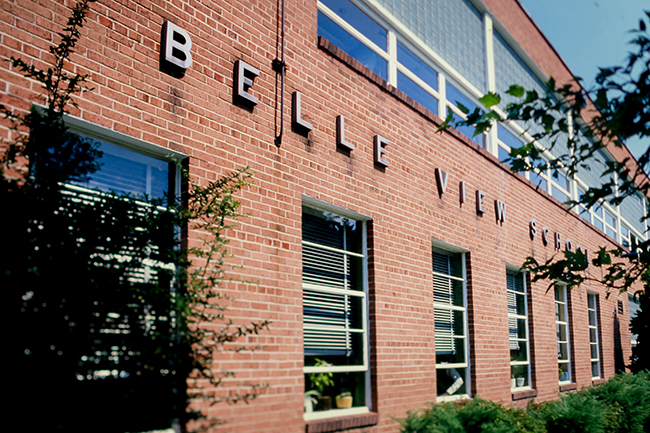
The Belle View Family Grows
As a result of a sometimes contentious debate, in 1977, the Board voted to select Quander Road School as its new center. They noted that Quander Road had the smallest population of the five Ft. Hunt Road area schools, and would require the least cost to convert. By 1987, most of the students who had attended Quander Road would again be part of the Belle View family. Other changes were taking place in the school community. By the mid-1980s, the shrinking student population that caused Quander Road to be converted into a center would lead to consolidation at the secondary school level as well. In 1985, Belle View would send its alumni to Sandburg Middle School (formerly Ft. Hunt High School), and then onto West Potomac High School.
At about the same time, the "thirty‐something" Belle View again seemed like a candidate for renovation, at least to many of the parents. At first, however, Belle View was not included in county plans to renovate schools with funds from a $179 million bond issue of 1988. This changed, however, with the effective advocacy by the PTA and community. Ultimately, renovations to Belle View were included in the Board's renovation plan. Leadership from the PTA can still be seen today in the community as one of its members, Kristen Amundson, would go on to serve on the Fairfax County School Board and then as Virginia State Delegate from the 44th district.
What's in a Name?
Learn about the origin of the name Belle View in this video from Fairfax County Public Schools television channel Red Apple 21.
Belle View: Looking Forward…Looking Back
In 1950, Fairfax County voters approved a bond issue, which would lead to the opening of Belle View Elementary School a little more than two years later. Since the doors first opened in November of 1952, the world, our nation, and community have changed greatly. Enormous population growth, along with changes in society and technology has meant that Belle View little resembles the school that opened a couple of weeks after Dwight Eisenhower was elected president.
In 1950, Fairfax County was transitioning form a rural county to a county that was primarily suburban. It had a population of around 200,000 and the area around Belle View was just beginning to see development. Neighborhoods, like Bucknell Manor, were being built. There was no shopping center, recreation center or library. By 1970, the county had a population of almost 500,000. Belle View shopping center had been built, and the Belle View community was no longer an outlying suburb. Throughout the 1980s, the community around Belle View matured. Martha Washington Library and Mount Vernon Recreation Center were established. While the county continued to grow, the number of school age children in our area leveled off. Today, the school age population around Belle View is again growing as a diverse community rediscovers the value of “close‐in” suburbs.
When Belle View opened in 1952, Fairfax County shared many characteristics of the pre‐civil rights era south. Schools were segregated, and there was little ethnic diversity. Kindergarten was not available. As with the population, this would change in the ensuing years. Belle View would become integrated in 1965. In 1968, a kindergarten program was established. Beginning in the 1980s immigration to the Washington area would lead to a greater ethnic diversity among Belle View Students. By the late 1990s and continuing today, Belle View celebrates a rich and diverse student population. This is enhanced with the introduction of full‐day kindergarten and an ESOL program, so that students in the Belle View community can attend their community school.
Technology has also changed greatly since the early 1950s. When Belle View opened, less than half of American households had television. By the mid‐1960s, television came to Belle View in the form of distance teaching of French language classes. Today, Belle View produces its own in‐house television program every morning. Computers, in 1952, belonged in large rooms filled with thousands of vacuum tubes. By the early 1970s, Fairfax County would use computers to automate data processing. Today, computers, connected to the Internet can be found in every classroom. It is possible for parents to communicate with their child’s teacher electronically via e‐mail. Finally, the school itself has changed. This included the addition of several classrooms in 1971, a major remodeling in 1988, and a new playground in 2000. The school colors have gone from green and white to blue and white, and the nickname from Beagles to Bobcats.
There have been a number of changes over Belle View’s history. A quick look at class composite photographs with their changing fashions would seem to be another example of this change. Take a closer look, beyond the dress and hairstyles. You will see throughout time, groups of eager students and dedicated staff. The people in the photographs are Belle View’s past. The people in the classrooms today are Belle Views future.

